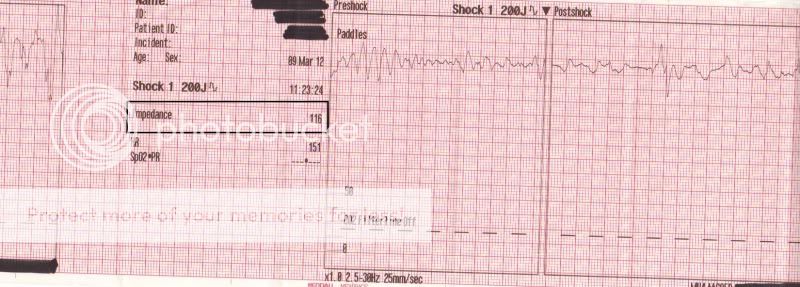mikie
Forum Lurker
- 1,071
- 1
- 36
So I never noticed this before...in the rectangular box where it says 'Impedance' - is that the actual amount of joules delivered the patient?
(This reminded me of my recent question about the 200-300-360 on biphasic monitors; this was biphasic defibrillation at 200J; second was at 300J but I don't have the rest of the strip).

BTW- ROSC was achieved with ~40 minutes of downtime. Don't know neurological outcome.
Thanks!
Edit: downtime = CPR in progress
(This reminded me of my recent question about the 200-300-360 on biphasic monitors; this was biphasic defibrillation at 200J; second was at 300J but I don't have the rest of the strip).

BTW- ROSC was achieved with ~40 minutes of downtime. Don't know neurological outcome.
Thanks!
Edit: downtime = CPR in progress
Last edited by a moderator:
